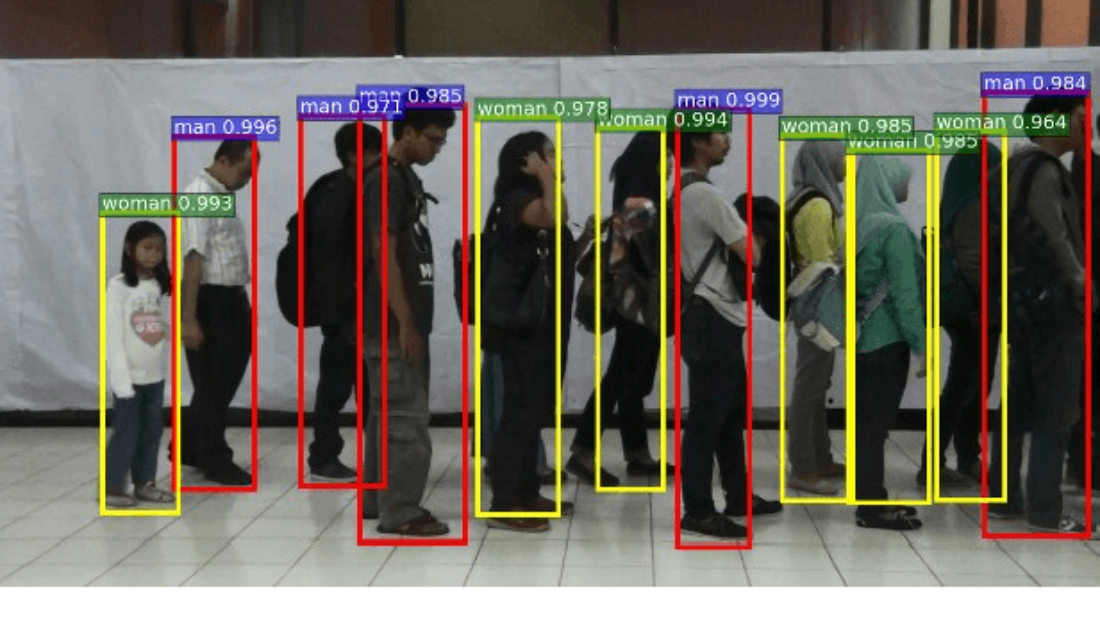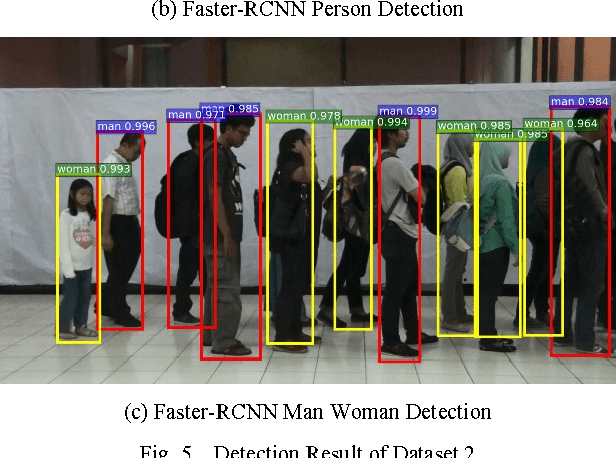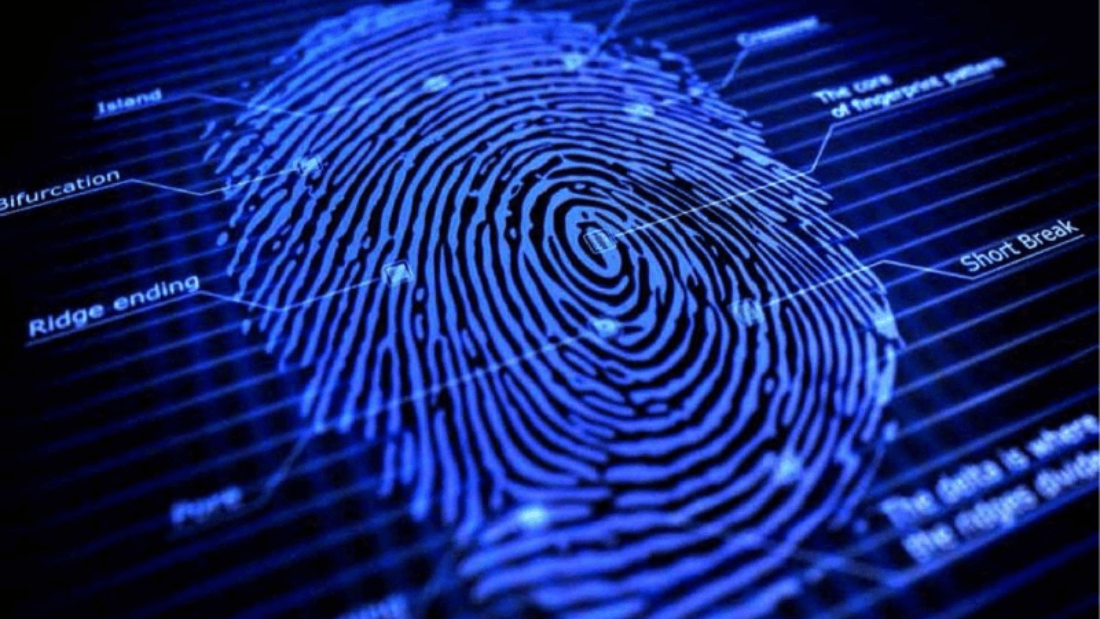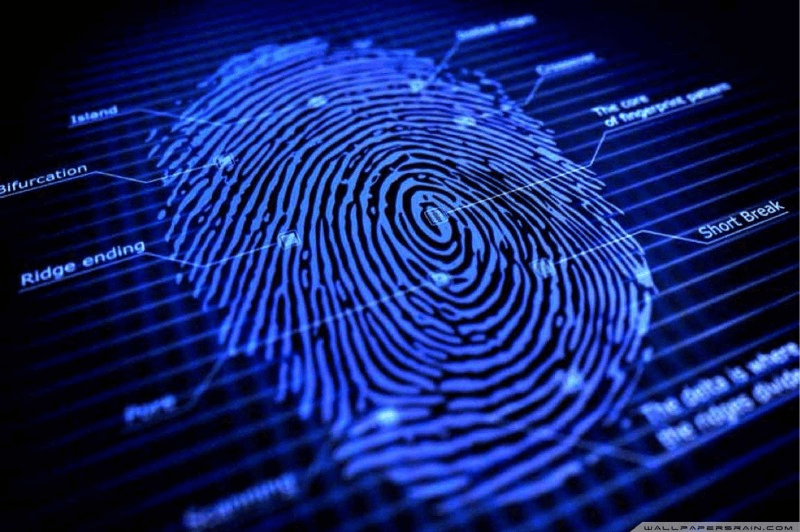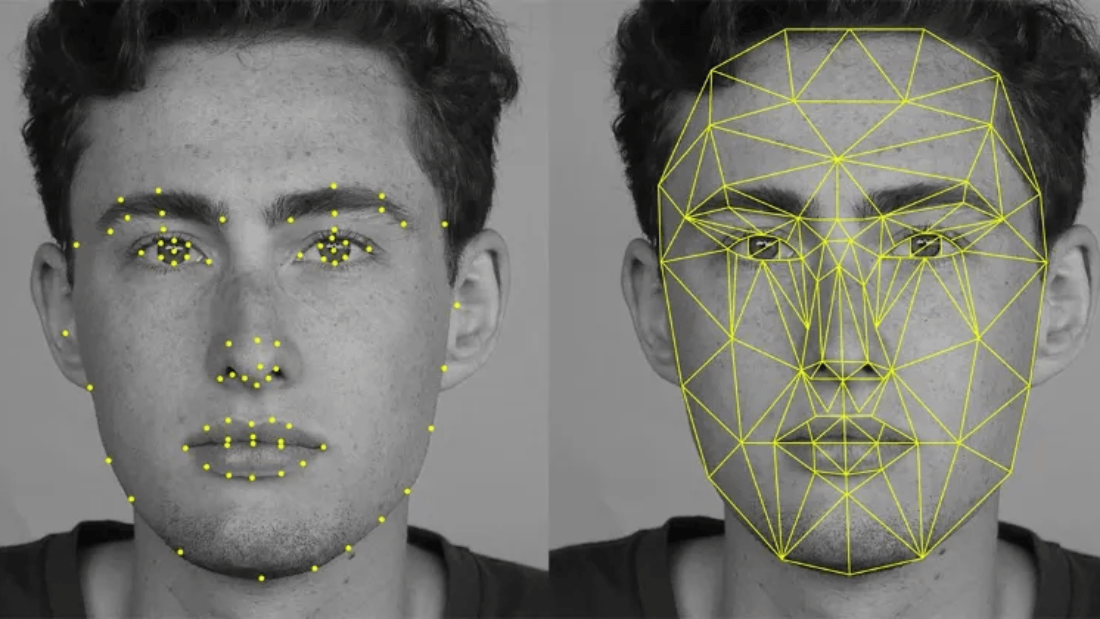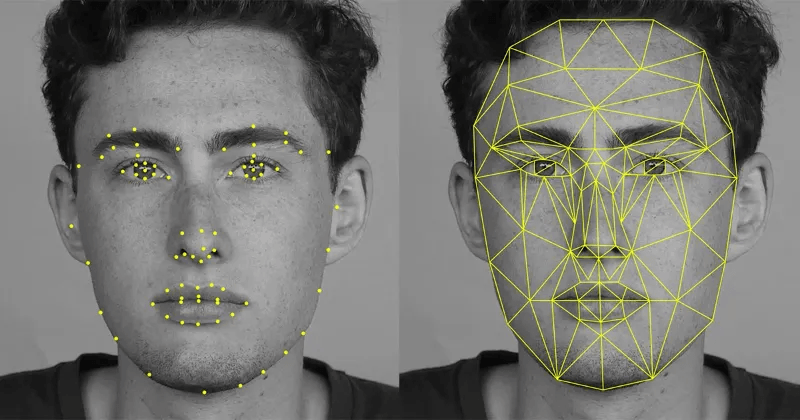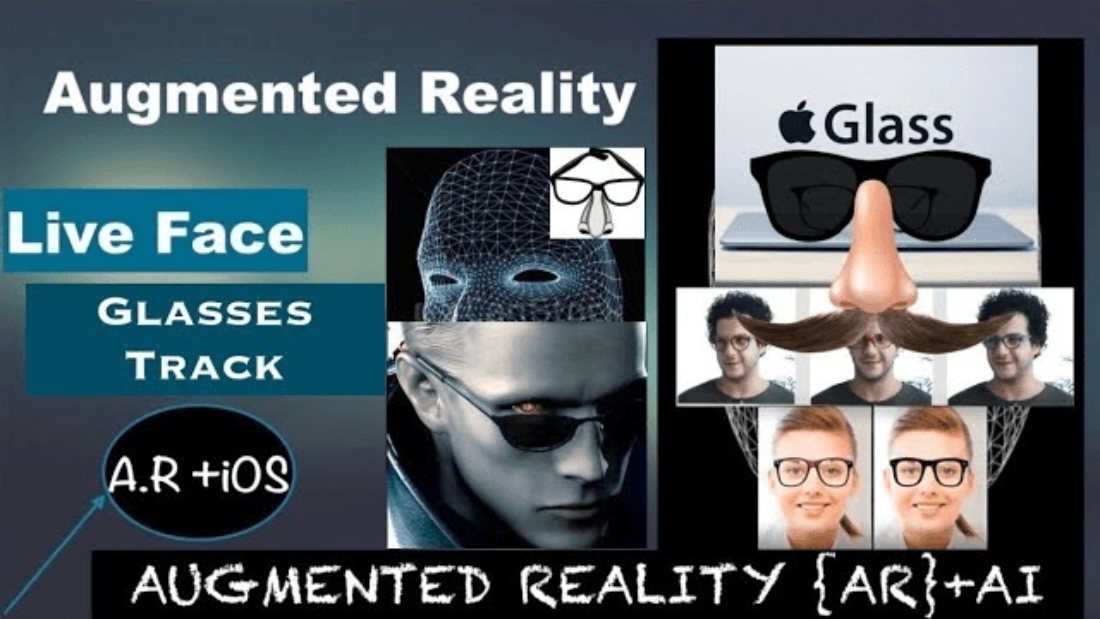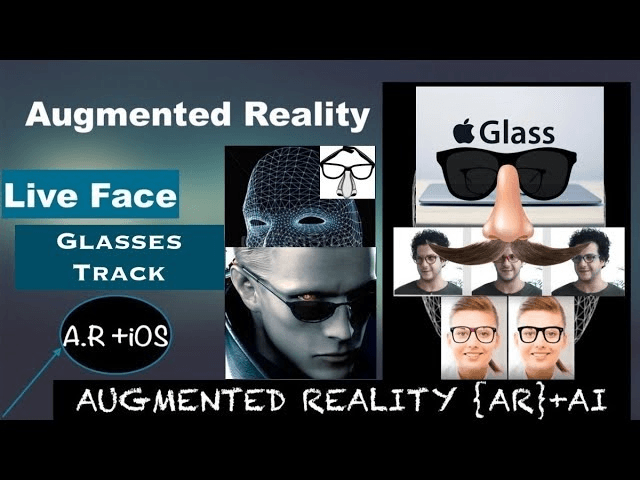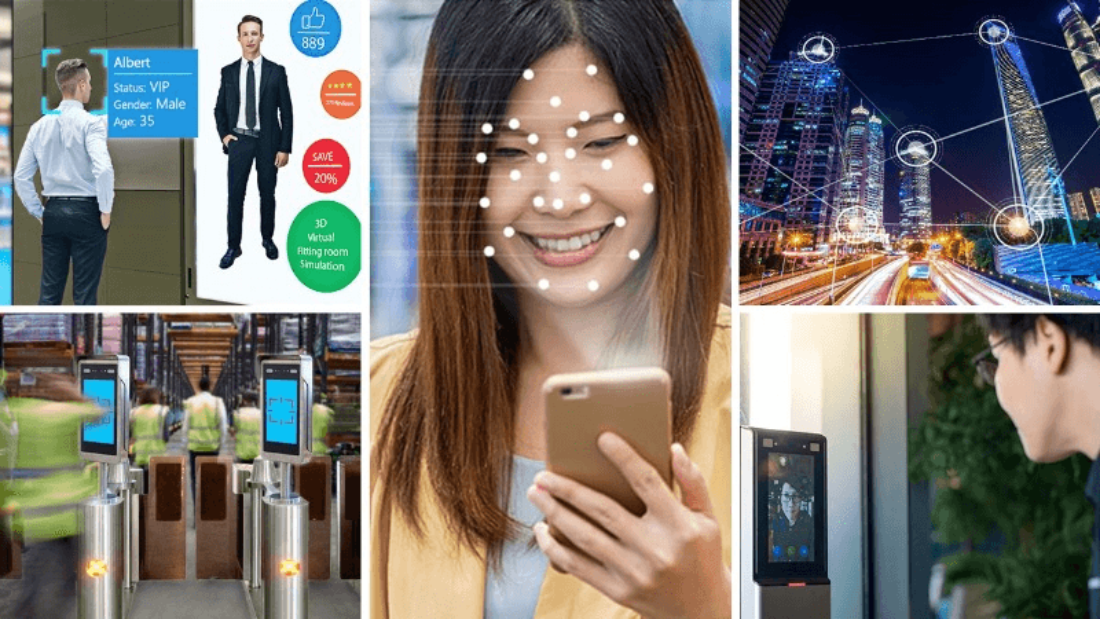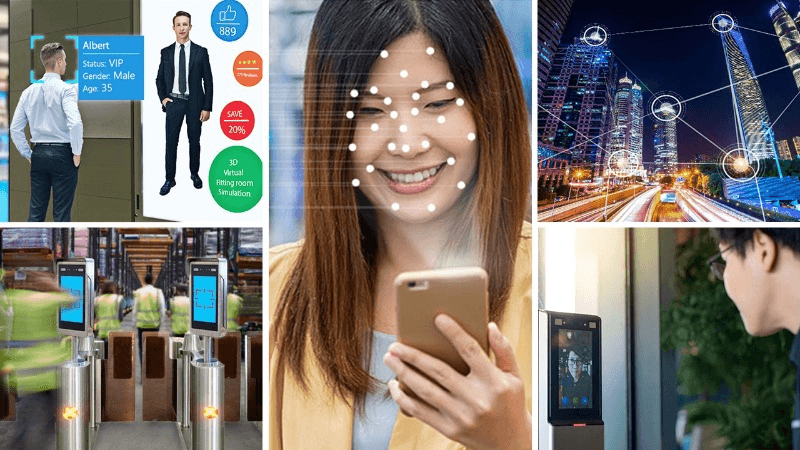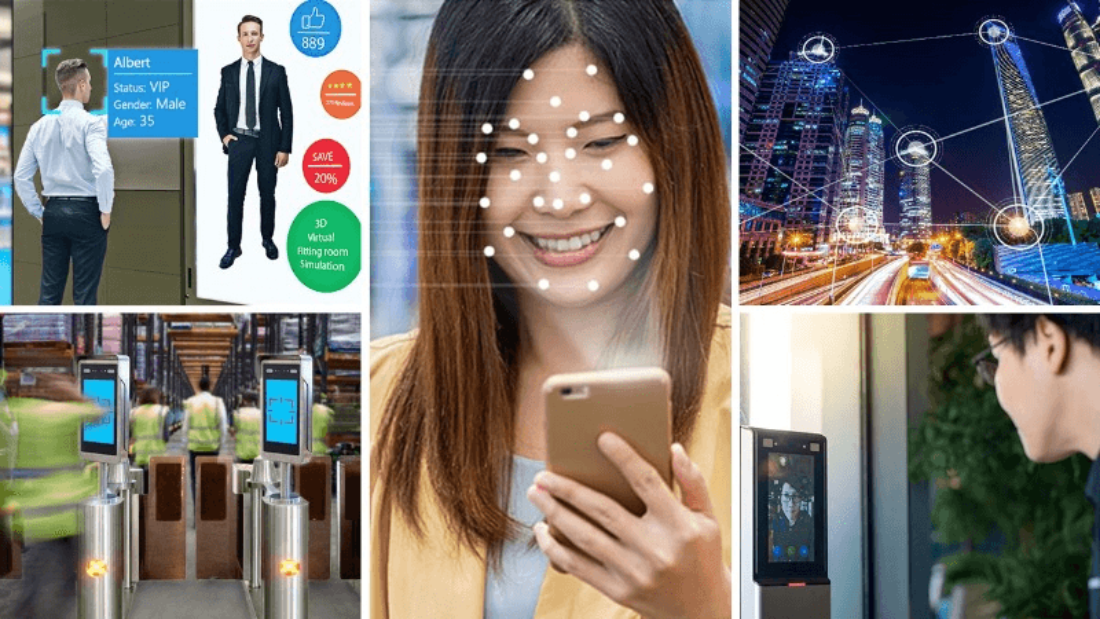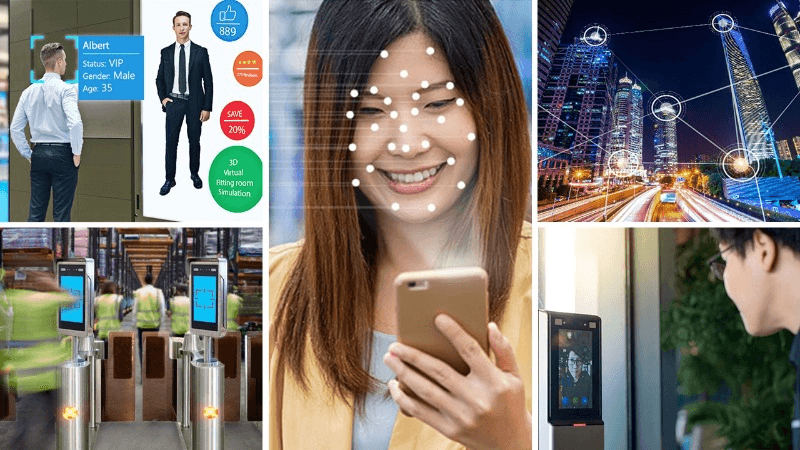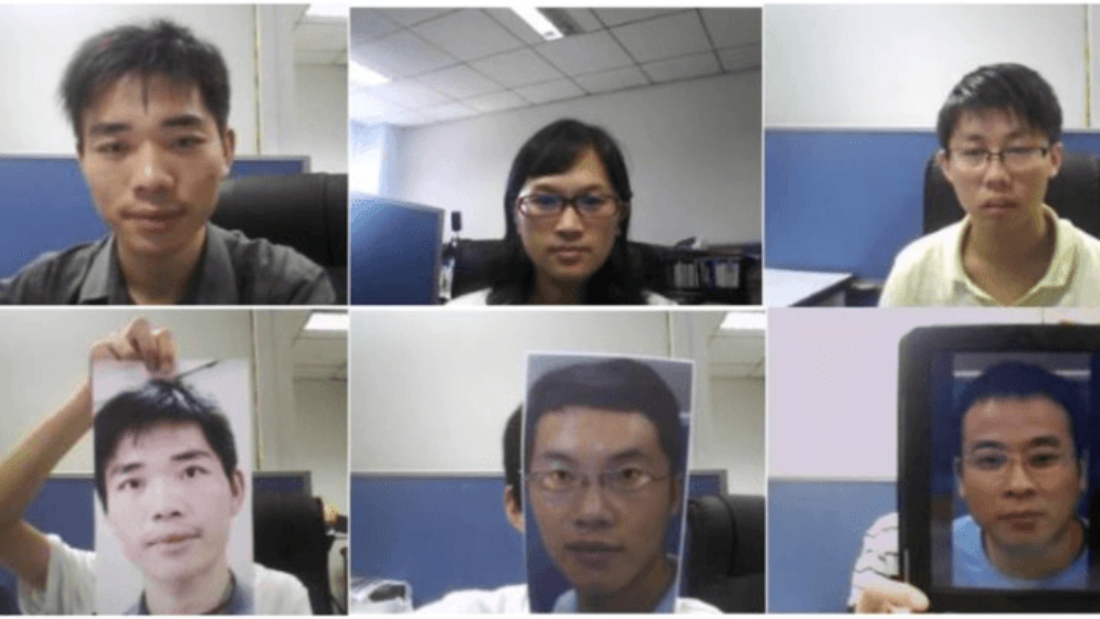Did you know that facial liveness detection is revolutionizing security in educational institutions by enhancing the accuracy and reliability of robust face recognition systems for biometric authentication? This technology, based on computer vision and biometrics, is transforming the way educational institutions ensure the safety and security of their premises. This cutting-edge technology, including biometric authentication and facial recognition systems, plays a pivotal role in verifying individuals’ authenticity, enhancing safety measures, and preventing unauthorized access within school premises. These authentication systems utilize biometrics to ensure secure access control. From ensuring accurate identification to thwarting face presentation attacks, facial recognition systems have become an indispensable tool for maintaining secure environments within schools. These biometric authentication systems utilize biometrics to enhance security measures. Join us as we explore how robust face recognition systems and facial liveness detection are making waves in educational settings, ensuring biometric authentication and the safeguarding of sensitive areas. Stay tuned for future directions on how this innovation is reshaping security protocols and fortifying protection within educational institutions. This publication will provide a tutorial on the study of these advancements.
Understanding Liveness Detection
Core Principles
Facial liveness detection, a crucial component of face recognition systems, relies on sophisticated algorithms and machine learning techniques to differentiate between real human presence and face spoofing attacks. It plays a vital role in ensuring the security of biometric authentication by accurately identifying fraudulent attempts. By utilizing face recognition and face liveness detection methods, this biometric technology ensures that only genuine individuals, identified through computer vision, gain access to secure areas. The primary goal is to bolster security by preventing unauthorized entry and protecting against spoofing attacks. This can be achieved through a robust architecture, thorough training, and staying updated with the latest papers on security measures.
The advanced algorithms used in face recognition and machine learning, such as OpenCV, enable the system to accurately validate the liveliness of an individual with high validation accuracy. For instance, when using face recognition and artificial intelligence, a liveness detector can discern if a person blinks or smiles as prompted, determining if these actions are genuine or simulated. This helps in effectively distinguishing live individuals from spoofing attacks using face liveness detection, a technique that uses a liveness detector to prevent fraudulent attempts and ensure accurate face recognition.
Active vs Passive Checks
In facial liveness detection, active checks prompt users to perform specific actions like blinking or smiling to prove their liveliness. This process is crucial for ensuring the accuracy and security of face recognition systems, as it helps verify that the faces presented are genuine and not manipulated. By incorporating biometric measures such as face presentation and analyzing facial features, these checks play a vital role in preventing fraudulent activities and maintaining the integrity of biometric authentication. This process is crucial for ensuring the accuracy and security of face recognition systems, as it helps verify that the faces presented are genuine and not manipulated. By incorporating biometric measures such as face presentation and analyzing facial features, these checks play a vital role in preventing fraudulent activities and maintaining the integrity of biometric authentication. This process is crucial for ensuring the accuracy and security of face recognition systems, as it helps verify that the faces presented are genuine and not manipulated. By incorporating biometric measures such as face presentation and analyzing facial features, these checks play a vital role in preventing fraudulent activities and maintaining the integrity of biometric authentication. These interactions help ensure that the individual is physically present and not just a static image or photo being presented for verification purposes. This is achieved through the use of face recognition and face liveness detection, which detect face presentation and ensure that it is a live person.
On the other hand, passive checks involve no user interaction; instead, they rely solely on analyzing facial features and movements using complex algorithms for face recognition and face liveness detection. This method enhances security by incorporating face recognition and biometric technology, which includes face liveness detection to prevent spoofing. It ensures a seamless identity verification process for users without any additional tasks.
Combining both active and passive checks in facial liveness detection systems enhances accuracy and security measures for face recognition. The integration of biometric technology and deep learning algorithms ensures reliable face presentation. While face liveness detection checks confirm physical presence through user prompts, face recognition passive checks analyze facial features continuously in real-time for added validation. The liveness detector ensures that the face presentation is authentic and not a fraudulent attempt.
Benefits in Education
Implementing face recognition and deep learning techniques for facial liveness detection brings several advantages to educational institutions. The use of a face presentation detector enhances security measures and ensures the authenticity of individuals accessing the premises. Firstly, the architecture of our network significantly enhances campus security by preventing unauthorized access to restricted areas such as laboratories or administrative offices where sensitive information is stored. This is achieved through rigorous research and training.
Moreover, this face recognition technology streamlines identity verification processes within educational settings by reducing administrative burdens associated with manual identification methods like ID cards or sign-in sheets. The use of face liveness detection and video analysis in this technology ensures accurate identification and enhances security. Additionally, it eliminates the need for physical papers by digitizing the identification process. Face recognition technology saves time for staff members while ensuring accurate authentication of individuals accessing school facilities. By using face recognition, schools can prevent spoofing attempts and enhance security. This technology relies on sophisticated algorithms and neural networks to analyze and identify faces. Many research papers have been published on the topic of face recognition, contributing to its advancement and effectiveness. Implementing a reliable face recognition network can greatly improve the overall security measures in place at educational institutions.
Evolution of Liveness Detection
Historical Progression
Facial recognition technology, powered by deep learning algorithms, has made significant advancements in detecting the liveness of a face in videos using 3D analysis. Initially, face liveness detection methods primarily relied on analyzing static images, which had limitations in differentiating between a live person and a spoof attempt. Techniques such as liveness detectors have been developed to address this issue. However, with continuous research and development, modern approaches now integrate deep learning and dynamic features to effectively detect spoofing attempts using face liveness detection methods. This evolution has significantly enhanced the accuracy and reliability of deep learning-based facial recognition and video face liveness detection systems.
In the past, early techniques struggled with deep learning to distinguish between real human faces and fake ones in 3D video recognition due to their reliance on static images. These approaches were susceptible to spoofing attacks using printed photos or videos, compromising the effectiveness of face liveness detection methods. However, advancements in technology have led to more sophisticated systems that can analyze subtle movements and expressions in real-time video streams, particularly in the context of face liveness detection research. These systems incorporate 3D approaches to accurately identify and verify the authenticity of a person’s face. For instance, by tracking micro-expressions such as eye blinks or subtle head movements during face liveness detection in authentication processes, these advanced systems can accurately determine if the user is physically present in video or images.
Technological advancements in the integration of high-resolution cameras and advanced sensors have greatly improved the capabilities of facial liveness detection. These advancements have allowed for better identification and verification of faces through the use of video, images, and inception technology. These cameras enable face liveness detection by capturing intricate details of facial features with precision in both video and images. This allows algorithms to make accurate assessments based on comprehensive data points, increasing accuracy. Moreover, cloud computing and artificial intelligence (AI) have further revolutionized face liveness detection research by facilitating real-time analysis of facial movements in training videos, while ensuring scalability across various educational environments.
Cloud computing enables seamless integration with existing educational platforms, leveraging extensive computational power for accurate liveness detection processes. This is particularly beneficial when working with mobile datasets and learning networks. AI algorithms continuously learn from new datasets to improve the accuracy of identifying live faces and efficiently detect spoofing attempts using images.
Integration with cloud computing enables educational institutions to implement facial liveness detection seamlessly within their existing infrastructure without significant hardware investments or operational disruptions. This integration allows for the efficient use of face recognition technology, leveraging the power of cloud-based networks to analyze and authenticate images. With this approach, institutions can enhance their learning environment by incorporating advanced facial recognition capabilities. This integration allows for the efficient use of face recognition technology, leveraging the power of cloud-based networks to analyze and authenticate images. With this approach, institutions can enhance their learning environment by incorporating advanced facial recognition capabilities. This integration allows for the efficient use of face recognition technology, leveraging the power of cloud-based networks to analyze and authenticate images. With this approach, institutions can enhance their learning environment by incorporating advanced facial recognition capabilities.
Liveness Detection Techniques
AI and Machine Learning
Artificial intelligence and machine learning are crucial for ensuring the accuracy of liveness detection techniques in face images. These techniques rely on extensive research. These advanced technologies analyze intricate patterns in facial movements to detect face liveness, ensuring accuracy and preventing spoofing attempts using images. By continually adapting and enhancing their algorithms, AI-powered systems improve accuracy and reliability in learning, research, and face liveness detection methods over time. For instance, face liveness detection systems can accurately detect subtle facial movements that are challenging to replicate, making it more difficult for real impostors to succeed in spoofing the system and launching attacks.
AI and machine learning also enable facial liveness detection systems to evolve with changing threats, including face attacks and spoofing of images. As a result, face liveness detection systems can effectively differentiate between a live person and an attempt at deception with high accuracy, even when faced with spoofing attempts using images. For example, by leveraging AI algorithms, liveness detectors can continuously learn from new data inputs to improve accuracy in recognizing authentic users while thwarting fraudulent activities such as spoofing.
In the realm of liveness detection, feature extraction methods play a pivotal role in capturing unique characteristics of an individual’s face for analysis. These methods ensure the accuracy of the analysis by utilizing images and leveraging research and learning techniques. These methods ensure the accuracy of the analysis by utilizing images and leveraging research and learning techniques. These methods ensure the accuracy of the analysis by utilizing images and leveraging research and learning techniques. Techniques like Local Binary Patterns (LBP) and Histogram of Oriented Gradients (HOG) are commonly used for face liveness detection in research. These techniques extract specific features such as texture, shape, or motion from facial images or videos to prevent attacks. Learning from these features helps improve the accuracy of face liveness detection. These extracted features are then compared against predefined models to determine face liveness or identify possible spoofing attempts with accuracy using images.
For instance, when someone tries to deceive a facial recognition system by using a spoofing photograph or video instead of presenting their actual face for authentication purposes – feature extraction methods come into play to ensure accuracy and protect against attacks. They help discern whether the presented image in face liveness detection is dynamic enough to indicate the presence of real-time movement characteristic of a live person. The accuracy of this detection is crucial, especially when working with images from a mobile dataset.
Deep Learning Applications
Deep learning techniques have revolutionized face liveness detection by significantly improving accuracy rates through applications like Convolutional Neural Networks (CNNs). These techniques leverage images and research to enhance the detection of liveness in faces. By analyzing a mobile dataset, the diffusion of deep learning in this field has shown promising results. These techniques leverage images and research to enhance the detection of liveness in faces. By analyzing a mobile dataset, the diffusion of deep learning in this field has shown promising results. These techniques leverage images and research to enhance the detection of liveness in faces. By analyzing a mobile dataset, the diffusion of deep learning in this field has shown promising results. These networks automatically learn discriminative features from extensive datasets, improving face liveness detection accuracy. This enables them to robustly identify live individuals with greater precision than traditional methods using images.
By excelling at face liveness detection and accurately distinguishing between genuine users and impostors attempting unauthorized access through spoofing techniques such as masks or high-resolution photos, deep learning models have set new benchmarks in accuracy when it comes to analyzing complex patterns in facial movements.
Security Enhancement in Education
Spoof Prevention
Facial liveness detection in education incorporates anti-spoofing measures to thwart fraudulent attempts, such as using face images or videos for impersonation. This technology ensures the accuracy of learning by detecting if the face is real or fake. Advanced algorithms research and scrutinize depth information, skin texture, and other factors to accurately spot spoofing in images or non-human objects. By deploying robust spoofing prevention techniques, educational institutions can fortify the accuracy of their security systems against attacks. Through extensive research, institutions can ensure the integrity of their security measures.
This face liveness detection technology ensures the accuracy of authentication by verifying subtle movements like blinking or nodding, thus preventing spoofing. It is particularly useful for mobile applications. For example, when a student tries to gain access to secure areas within the school premises, facial liveness detection can accurately discern whether it’s a genuine person or an impostor attempting to deceive the system with a static image. This face spoofing detection technology ensures the accuracy of the system by analyzing the images presented. This face spoofing detection technology ensures the accuracy of the system by analyzing the images presented. This face spoofing detection technology ensures the accuracy of the system by analyzing the images presented.
The use of sophisticated anti-spoofing methods ensures the accuracy of research data and protects against attacks on sensitive information within educational settings. These methods also help maintain data privacy and prevent unauthorized access to datasets.
Impersonation Prevention
Facial liveness detection is a crucial tool in preventing impersonation and face spoofing within educational environments. Its accuracy is enhanced through machine learning techniques. Accuracy plays a crucial role in accurately verifying the identity of students, staff, and visitors while reducing the risk of unauthorized individuals gaining access to sensitive areas. Spoofing, face liveness detection, and research have all contributed to improving accuracy in identity verification.
By incorporating spoofing technology into their security protocols, schools and colleges can effectively combat identity theft and prevent instances where someone might attempt spoofing attacks to assume another individual’s identity for malicious purposes. This research and learning is crucial for protecting personal information. For instance, during examinations or assessments, the accuracy of facial liveness detection ensures that each student is correctly identified before participating in these academic activities. This research-based test, conducted online or on-campus, incorporates facial recognition technology to verify the identity of students.
Furthermore, this measure enhances overall safety by conducting thorough research and test to identify potential attacks. It ensures that only authorized personnel, who have undergone proper learning, are granted entry into restricted zones within educational facilities.
Safety Measures
Incorporating facial liveness detection enhances safety measures in schools by providing an additional layer of security against potential threats or individuals with malicious intent. This research-based approach utilizes machine learning to detect and prevent face spoofing. This research-based approach utilizes machine learning to detect and prevent face spoofing. This research-based approach utilizes machine learning to detect and prevent face spoofing. This advanced technology swiftly detects spoofing attacks, face liveness detection, and unauthorized access attempts before they can cause harm. The research on this technology is focused on identifying suspicious behavior.
For instance,
If an individual attempts unauthorized entry into school premises, there is a risk of attacks, spoofing, and other security breaches. Through research and learning, it is important to address and prevent such incidents.
Or if there is an attempt at tailgating (following closely behind an authorized person) through entrances secured with facial recognition systems, face liveness detection can help prevent spoofing attacks. This is an important area of research. face liveness detection can help prevent spoofing attacks. This is an important area of research. face liveness detection can help prevent spoofing attacks. This is an important area of research.
Facial liveness detection is crucial in identifying and preventing face attacks. This technology uses a dataset to quickly detect any suspicious activity, alerting security personnel for immediate action. Research plays a vital role in continuously improving facial liveness detection systems.
Additionally,
In emergency situations like lockdowns due to intruders,
Or during evacuations when face liveness detection and identifying every individual present becomes critical to prevent attacks, research on diffusion is necessary.
Facial liveness detection research helps prevent face attacks by diffusing potential threats and ensuring that everyone is accounted for within the premises.
User Experience and Liveness Detection
Streamlined Verification
Facial liveness detection enhances user experience in education by automating face identity verification, reducing manual efforts in learning, and cutting administrative costs for research dataset. Face liveness detection technology leverages a dataset to enhance access control procedures within educational institutions, eliminating the need for physical identification cards or passwords. This technology is a result of research and learning in the field of face liveness detection. For example, instead of students having to show their IDs at multiple checkpoints, facial liveness detection allows seamless entry by simply scanning their faces. This innovative technology makes use of a dataset of facial images to verify the identity of individuals, enhancing security and convenience. By leveraging the principles of diffusion, this research in facial recognition has paved the way for efficient and reliable entry systems in various learning environments. This innovative technology makes use of a dataset of facial images to verify the identity of individuals, enhancing security and convenience. By leveraging the principles of diffusion, this research in facial recognition has paved the way for efficient and reliable entry systems in various learning environments. This innovative technology makes use of a dataset of facial images to verify the identity of individuals, enhancing security and convenience. By leveraging the principles of diffusion, this research in facial recognition has paved the way for efficient and reliable entry systems in various learning environments. This streamlined process not only saves time for both students and staff but also improves overall operational efficiency in research and learning. The use of a dataset enhances the efficiency of the process, allowing for easier access to information. Additionally, the diffusion of knowledge is facilitated through this streamlined approach.
Furthermore, the implementation of facial liveness detection can significantly enhance security measures within educational settings by utilizing face recognition technology and leveraging machine learning algorithms on a comprehensive dataset. By integrating face liveness detection technology, based on extensive research and using a comprehensive dataset, into access control systems or attendance tracking processes, schools can ensure that only authorized individuals, through the diffusion of their unique facial features, gain entry to specific areas or facilities on campus. This serves as a proactive approach to bolstering security against attacks while conducting research on face liveness detection. The dataset used ensures a hassle-free experience for all stakeholders involved.
Pros:
Automates identity verification
Reduces administrative costs
Improves operational efficiency
Cons:
Potential concerns regarding data privacy
Behavioral Analysis
In addition to streamlining verification processes, facial liveness detection systems offer behavioral analysis capabilities that provide valuable insights into individuals’ emotional states and intentions. This research on face datasets enhances the learning process. This research on face datasets enhances the learning process. This research on face datasets enhances the learning process. By analyzing facial expressions and micro-expressions, face liveness detection systems can aid in identifying potential threats or detecting abnormal behaviors within educational settings. This research on learning can help prevent attacks. For instance, if a student exhibits signs of distress during an exam through facial expressions captured by the system’s video replays feature, educators can promptly intervene to offer support. This face liveness detection research can greatly benefit from a comprehensive learning dataset. This face liveness detection research can greatly benefit from a comprehensive learning dataset. This face liveness detection research can greatly benefit from a comprehensive learning dataset.
The integration of behavioral analysis and facial liveness detection research enables schools to proactively address security concerns by utilizing a face dataset and maintaining a safe learning environment for all members of the community. This integration allows for the diffusion of advanced security measures. Moreover, it contributes to early intervention strategies aimed at addressing mental health issues among students by identifying signs of distress or discomfort that may otherwise go unnoticed. This research helps in learning about the diffusion of attacks on mental health. This research helps in learning about the diffusion of attacks on mental health. This research helps in learning about the diffusion of attacks on mental health.
Privacy Concerns
While the adoption of facial liveness detection in education settings brings significant benefits in terms of user experience and security enhancement, it also raises valid privacy concerns related to the collection and storage of biometric data in the face dataset. Research on attacks is crucial to address these concerns. Educational institutions must prioritize implementing strict data protection policies designed to safeguard sensitive information collected through these systems while ensuring compliance with relevant regulations. This is especially important when conducting research and dealing with datasets that may be vulnerable to attacks. Additionally, it is crucial to consider the security of face recognition technologies, as they often rely on sensitive data. This is especially important when conducting research and dealing with datasets that may be vulnerable to attacks. Additionally, it is crucial to consider the security of face recognition technologies, as they often rely on sensitive data. This is especially important when conducting research and dealing with datasets that may be vulnerable to attacks. Additionally, it is crucial to consider the security of face recognition technologies, as they often rely on sensitive data.
Transparency plays a crucial role in addressing privacy concerns associated with facial liveness detection technologies deployed within educational environments. This includes conducting thorough research, using a comprehensive dataset, and ensuring the prevention of face replay attacks. This includes conducting thorough research, using a comprehensive dataset, and ensuring the prevention of face replay attacks. This includes conducting thorough research, using a comprehensive dataset, and ensuring the prevention of face replay attacks.
Vulnerabilities and Countermeasures
System Weaknesses
Facial liveness detection systems face challenges in accurately identifying spoof attempts, especially those utilizing sophisticated techniques like deepfakes. These systems rely on a dataset of real and fake faces to train and improve their accuracy. Ongoing research aims to enhance the effectiveness of these systems in detecting and preventing attacks. These face liveness detection attacks can imitate real facial movements and deceive the system into granting unauthorized access. To counter these attacks, researchers are working on developing a comprehensive dataset for further research. Environmental factors such as inadequate lighting conditions or low-quality cameras may impact the effectiveness of facial liveness detection technology when faced with attacks. This is because the technology relies on a dataset that can be vulnerable to replay attacks. Continuous research and development are crucial to address vulnerabilities in facial liveness detection systems and enhance their resilience against face attacks and replay attacks. This is necessary to ensure the accuracy and reliability of the dataset used for facial recognition.
Continuous advancements in technology have led to increasingly convincing deepfake videos, which pose challenges for facial liveness detection systems in distinguishing between genuine users and fraudulent attempts. This is especially true when faced with replay attacks using a dataset of manipulated facial images. For instance, a high-definition deepfake video could trick the system into recognizing it as an authentic user interaction, thereby compromising security measures put in place by educational institutions. This highlights the importance of face liveness detection and having a comprehensive dataset to combat attacks such as replay. This highlights the importance of face liveness detection and having a comprehensive dataset to combat attacks such as replay. This highlights the importance of face liveness detection and having a comprehensive dataset to combat attacks such as replay.
Moreover, variations in lighting conditions or camera quality may affect the accuracy of facial recognition software used for liveness detection. These variations can occur when dealing with different faces in the dataset, making the software vulnerable to replay attacks. These variations can occur when dealing with different faces in the dataset, making the software vulnerable to replay attacks. These variations can occur when dealing with different faces in the dataset, making the software vulnerable to replay attacks. Inadequate lighting in the dataset might result in distorted images that hinder accurate face liveness detection analysis by the system, potentially leading to false rejections or acceptances of attacks like replay.
Robust Security Techniques
Implementing multi-factor authentication with facial liveness detection significantly enhances overall security within educational institutions. This ensures that the face is a crucial part of the authentication process, protecting against attacks such as replay and utilizing a reliable dataset. By combining multiple forms of authentication such as passwords or PINs with biometric identification like face liveness detection, educational organizations can establish a more robust defense against unauthorized access attempts and attacks. This can be achieved by using a diverse dataset for training the face liveness detection system to detect and prevent replay attacks.
Furthermore, integrating facial recognition with other biometric modalities such as fingerprint or voice recognition provides an additional layer of security through diversified verification methods. This includes ensuring face liveness detection to prevent attacks like replay. A diverse dataset is crucial for accurate facial recognition. This includes ensuring face liveness detection to prevent attacks like replay. A diverse dataset is crucial for accurate facial recognition. This includes ensuring face liveness detection to prevent attacks like replay. A diverse dataset is crucial for accurate facial recognition. This multifaceted approach reduces the likelihood of successful fraudulent entry through impersonation, manipulation, or replay attacks on individual biometric features in the dataset.
In addition to multi-factor authentication strategies, encryption and secure storage protocols play a pivotal role in safeguarding sensitive biometric data from potential attacks. This is especially important when dealing with face liveness detection, as the dataset used for training and testing the algorithms must be protected to prevent replay attacks. This is especially important when dealing with face liveness detection, as the dataset used for training and testing the algorithms must be protected to prevent replay attacks. This is especially important when dealing with face liveness detection, as the dataset used for training and testing the algorithms must be protected to prevent replay attacks. The implementation of robust encryption mechanisms ensures that stored biometric information, such as face liveness detection, remains protected from unauthorized access attempts, including replay attacks.
To replay this point: Implementing multi-factor authentication alongside facial liveness detection would require users not only to present their live face but also provide another form of identity validation before gaining access to secure areas within educational environments.
Future of Facial Liveness Detection
Research Directions
Ongoing research aims to enhance the accuracy and efficiency of facial liveness detection algorithms. The face replay is a significant challenge in this area of study. The face replay is a significant challenge in this area of study. The face replay is a significant challenge in this area of study. Techniques like 3D face reconstruction and gaze analysis are being explored to improve these systems by incorporating replay capabilities. Real-time monitoring solutions are being developed to proactively detect threats within educational environments, including the use of facial recognition technology and replay capabilities.
These advancements will bolster the capabilities of facial liveness detection systems, ensuring a more robust defense against spoofing attacks in educational settings. With these advancements, the face recognition technology will be able to accurately detect and verify the user’s face, preventing any attempts at replaying or spoofing the system. With these advancements, the face recognition technology will be able to accurately detect and verify the user’s face, preventing any attempts at replaying or spoofing the system. With these advancements, the face recognition technology will be able to accurately detect and verify the user’s face, preventing any attempts at replaying or spoofing the system. For instance, by incorporating 3D face reconstruction, these systems can better discern between real faces and fake presentations, making them more reliable for replay, attendance tracking, or exam proctoring.
Zero-Shot Learning
Zero-shot learning techniques play a pivotal role in enabling facial liveness detection systems to identify and classify new or previously unseen spoofing attacks. These techniques ensure that the system can accurately detect the real face and differentiate it from a replayed image or video. These techniques ensure that the system can accurately detect the real face and differentiate it from a replayed image or video. These techniques ensure that the system can accurately detect the real face and differentiate it from a replayed image or video. Leveraging prior knowledge and generalization abilities enhances the adaptability of face liveness detection models, allowing them to accurately recognize even unfamiliar replay spoof attempts.
This approach is crucial as it ensures that emerging threats, such as replay attacks, can be effectively identified and prevented using face liveness detection without requiring extensive reprogramming or updates to the existing system. By employing face liveness detection and replay techniques, educational institutions can stay ahead of potential security breaches without constantly modifying their facial recognition systems.
Anomaly Verification
Anomaly verification techniques focus on detecting unusual patterns or behaviors that deviate from normal interactions within face replay and facial liveness detection systems. Establishing baseline behavior models enables any deviations in face liveness detection to be flagged as potential replay spoof attempts or security threats.
Application in Educational Settings
E-Learning Identity Validation
Facial liveness detection plays a crucial role in verifying the identity of students engaging in e-learning. It ensures that the face is authentic and prevents any possibility of replay attacks. Face liveness detection ensures that only authorized individuals, without the possibility of replay, access online learning platforms. This prevents academic dishonesty and unauthorized sharing of course materials. By incorporating facial liveness detection into e-learning systems, educational institutions can ensure fairness and integrity in remote education. The face replay feature helps in verifying the authenticity of students’ identities during online exams and assessments.
For instance, during an online exam, a student’s identity can be verified through facial liveness detection to ensure that they are the authorized individual taking the test. This process allows for a secure and reliable way to verify the face of the student and prevent any unauthorized replays of the exam. This process allows for a secure and reliable way to verify the face of the student and prevent any unauthorized replays of the exam. This process allows for a secure and reliable way to verify the face of the student and prevent any unauthorized replays of the exam. This prevents cheating and promotes a level playing field for all students participating in e-learning programs by implementing replay and face liveness detection.
When accessing digital study materials or joining virtual classrooms, students can use facial liveness detection to authenticate and verify their face before proceeding. This ensures the utmost security and prevents any possibility of fraud or unauthorized access. With facial liveness detection, students can confidently engage in their online learning experience, knowing that their identity is protected and that only they can access the resources and participate in the virtual classroom. This adds an extra layer of security to prevent unauthorized individuals from gaining access to sensitive educational resources by implementing face liveness detection to detect and prevent replay attacks.
School Security Role
The implementation of facial liveness detection technology enables schools to actively enhance their security measures by detecting and verifying the face of individuals in real-time. This technology provides an additional layer of protection by ensuring that only authorized individuals are granted access. In the event of any suspicious activity, the system can instantly replay the captured footage for further analysis and investigation. By integrating robust identification systems based on face liveness detection technology, educational institutions can effectively deter incidents such as unauthorized access or intrusions onto school premises.
Imagine a scenario where a school uses facial recognition cameras equipped with liveness detection to scan each student’s face at entry points. These cameras use face liveness detection to instantly identify whether individuals seeking entry are legitimate staff members or visitors with valid permissions. In case an unauthorized person attempts to gain access by using someone else’s credentials or by posing as another individual, the system with face liveness detection would immediately flag this activity, enabling prompt intervention by security personnel.
Furthermore, school security personnel can leverage real-time monitoring capabilities enabled by facial liveness detection technology to proactively respond to potential threats within educational environments. By using this technology, security personnel can quickly identify and address any face-related concerns, ensuring the safety and well-being of students and staff. By using this technology, security personnel can quickly identify and address any face-related concerns, ensuring the safety and well-being of students and staff. By using this technology, security personnel can quickly identify and address any face-related concerns, ensuring the safety and well-being of students and staff. For example, if there is an attempt at unauthorized entry or suspicious behavior detected within the school premises via surveillance cameras equipped with face liveness detection technology, security officers can swiftly intervene before any harm occurs.
Ensuring Ethical Use of Technology
Addressing Privacy Issues
Educational institutions must prioritize privacy concerns when implementing facial liveness detection systems to ensure the security and accuracy of face recognition technology. Clear policies and guidelines should govern the collection, storage, and usage of face and al biometric data. For instance, establishing protocols for obtaining consent before capturing or using individuals’ facial biometrics is essential to uphold privacy standards and ensure the protection of individuals’ face.
Regular audits and assessments are crucial to ensure compliance with privacy regulations, especially when it comes to the face. These measures also help maintain public trust in the educational institution’s commitment to safeguarding sensitive information, ensuring that they face no doubts or concerns. By conducting periodic reviews, schools can identify any potential privacy breaches or areas needing improvement in their facial liveness detection processes. These reviews help ensure that the face recognition technology used by schools is effective and secure. These reviews help ensure that the face recognition technology used by schools is effective and secure. These reviews help ensure that the face recognition technology used by schools is effective and secure.
Transparency is crucial in dealing with privacy concerns surrounding the face and facial liveness detection in the education sector. Educational institutions should openly communicate with students, parents, and staff about the use of facial recognition technology in the academic environment. This fosters an atmosphere of trust while allowing stakeholders to face any concerns they may have regarding their personal data’s handling.
Clear policies for collecting biometric data
Regular audits for compliance assurance
Transparent communication with stakeholders
Balancing Security and Privacy
Striking a balance between security and privacy is paramount when deploying facial liveness detection in educational settings. The use of facial recognition technology can help enhance safety measures and protect the face privacy of individuals in schools. The use of facial recognition technology can help enhance safety measures and protect the face privacy of individuals in schools. The use of facial recognition technology can help enhance safety measures and protect the face privacy of individuals in schools. It involves implementing robust security measures without compromising individuals’ right to privacy. These security measures ensure that individuals’ face is protected without infringing on their privacy rights. These security measures ensure that individuals’ face is protected without infringing on their privacy rights. These security measures ensure that individuals’ face is protected without infringing on their privacy rights. One approach to protecting individuals’ identities is through the use of anonymization techniques that replace identifiable information with pseudonyms or codes, ensuring anonymity and safeguarding their face.
Secure transmission of data is another critical aspect of balancing security and privacy when utilizing facial recognition technology in education. Face recognition technology ensures secure transmission of face data, maintaining the privacy and security of individuals involved in the educational process. Face recognition technology ensures secure transmission of face data, maintaining the privacy and security of individuals involved in the educational process. Face recognition technology ensures secure transmission of face data, maintaining the privacy and security of individuals involved in the educational process. Encrypting data during its transfer ensures that it remains inaccessible to unauthorized parties throughout its journey from one point to another within the school’s network infrastructure. This ensures the security and privacy of data, especially in the face of potential threats. AL, or Access Level, is an important factor in determining who has access to the encrypted data. By implementing strong encryption protocols, schools can protect sensitive information and prevent unauthorized access or data breaches. This ensures the security and privacy of data, especially in the face of potential threats. AL, or Access Level, is an important factor in determining who has access to the encrypted data. By implementing strong encryption protocols, schools can protect sensitive information and prevent unauthorized access or data breaches. This ensures the security and privacy of data, especially in the face of potential threats. AL, or Access Level, is an important factor in determining who has access to the encrypted data. By implementing strong encryption protocols, schools can protect sensitive information and prevent unauthorized access or data breaches.
Furthermore, adopting a “privacy-by-design” approach enables educational institutions to integrate ethical considerations into their facial liveness detection systems from inception rather than as an afterthought. By considering the face in the design process, educational institutions can ensure that privacy and ethics are prioritized in their facial liveness detection systems. By considering the face in the design process, educational institutions can ensure that privacy and ethics are prioritized in their facial liveness detection systems. By considering the face in the design process, educational institutions can ensure that privacy and ethics are prioritized in their facial liveness detection systems. This proactive strategy aligns security measures with ethical principles and legal requirements while minimizing potential risks associated with student or staff member identification through biometric data processing, specifically the use of face recognition technology.
Conclusion
You’ve now journeyed through the intricate landscape of facial liveness detection in educational settings, where the face plays a crucial role. From understanding the evolution of face liveness detection to exploring its vulnerabilities and countermeasures, you’ve gained insights into the security enhancements and ethical considerations surrounding this face technology. As we face the future, it’s crucial to prioritize the well-being and privacy of individuals within educational environments by responsibly harnessing facial liveness detection.
Moving forward, it’s imperative to continue fostering discussions and implementing measures that uphold the ethical use of facial liveness detection in education. The use of face recognition technology in education is gaining traction, and it is crucial to ensure that its implementation is done ethically and responsibly. By promoting open conversations and establishing guidelines, we can create an environment where face recognition technology is used for the benefit of students while respecting their privacy and security. The use of face recognition technology in education is gaining traction, and it is crucial to ensure that its implementation is done ethically and responsibly. By promoting open conversations and establishing guidelines, we can create an environment where face recognition technology is used for the benefit of students while respecting their privacy and security. The use of face recognition technology in education is gaining traction, and it is crucial to ensure that its implementation is done ethically and responsibly. By promoting open conversations and establishing guidelines, we can create an environment where face recognition technology is used for the benefit of students while respecting their privacy and security. By staying informed and actively participating in shaping the responsible application of face recognition technology, you can contribute to creating a safe and trustworthy educational environment for all. Embracing these principles will not only fortify security but also cultivate a culture of respect and integrity within educational institutions. In the face of ever-evolving threats, it is crucial to prioritize security measures that promote respect and integrity in educational institutions. In the face of ever-evolving threats, it is crucial to prioritize security measures that promote respect and integrity in educational institutions. In the face of ever-evolving threats, it is crucial to prioritize security measures that promote respect and integrity in educational institutions.
Frequently Asked Questions
What is facial liveness detection?
Facial liveness detection is a technology that verifies the presence of a live person in front of the camera, ensuring that the user is physically present and not using a static image or video. This technology prevents unauthorized access by detecting the face of the user.
How does facial liveness detection benefit educational settings?
Facial liveness detection enhances security in educational environments by preventing identity fraud during online exams or remote learning sessions. This technology uses advanced algorithms to analyze the face and ensure that it is a real and live person, rather than a photo or video. By requiring students to show their face during exams or learning sessions, educational institutions can verify the authenticity of the individual and prevent cheating or impersonation. This helps to maintain the integrity of the educational process and ensures fair evaluation for all students. This technology uses advanced algorithms to analyze the face and ensure that it is a real and live person, rather than a photo or video. By requiring students to show their face during exams or learning sessions, educational institutions can verify the authenticity of the individual and prevent cheating or impersonation. This helps to maintain the integrity of the educational process and ensures fair evaluation for all students. This technology uses advanced algorithms to analyze the face and ensure that it is a real and live person, rather than a photo or video. By requiring students to show their face during exams or learning sessions, educational institutions can verify the authenticity of the individual and prevent cheating or impersonation. This helps to maintain the integrity of the educational process and ensures fair evaluation for all students. It ensures that students are actively participating and discourages cheating, thereby maintaining academic integrity. With the use of face recognition technology, students’ faces are scanned to verify their identities, ensuring that the right person is participating in the activities. This helps to maintain the integrity of the academic environment by preventing impersonation and cheating. With the use of face recognition technology, students’ faces are scanned to verify their identities, ensuring that the right person is participating in the activities. This helps to maintain the integrity of the academic environment by preventing impersonation and cheating. With the use of face recognition technology, students’ faces are scanned to verify their identities, ensuring that the right person is participating in the activities. This helps to maintain the integrity of the academic environment by preventing impersonation and cheating.
What are some common vulnerabilities in facial liveness detection?
Common vulnerabilities include spoofing attempts using high-quality face images or videos, as well as impersonation through sophisticated face techniques. Environmental factors, including lighting conditions, can significantly affect the accuracy of face liveness detection systems.
How can the ethical use of robust face recognition systems and biometric authentication be ensured in education to combat deep fakes and protect the integrity of biometrics?
Ethical use of face data involves transparent communication about face data collection and usage, obtaining consent from individuals whose face data is being processed, and implementing measures to safeguard face privacy. Educators must prioritize responsible deployment of facial recognition technology to maintain trust among students and stakeholders.
What does the future hold for robust face recognition systems and facial liveness detection in educational settings? With the rapid advancement of computer vision technology, there is a growing concern about the potential risks posed by deep fakes and spoofed faces.
The future entails continued advancements in biometric technology, specifically in the field of face recognition, to enhance accuracy and reliability. Integration with artificial intelligence may further strengthen security measures while ensuring seamless user experience within educational platforms.


